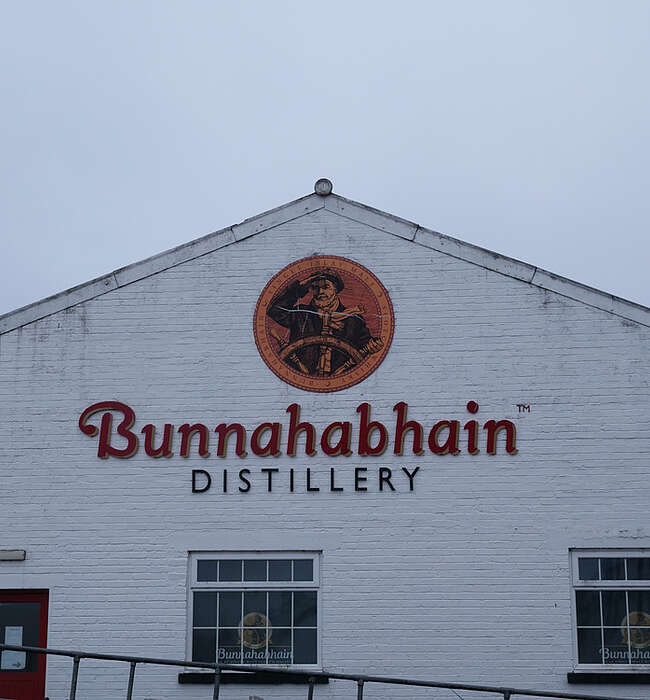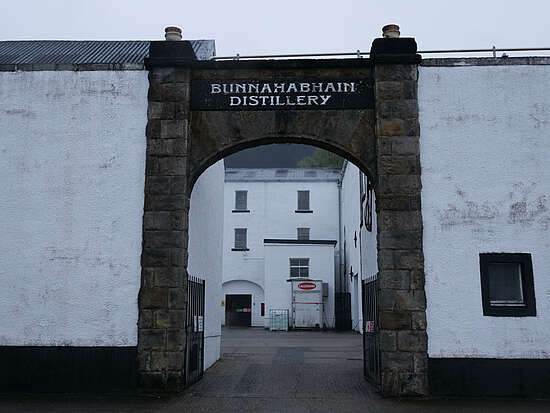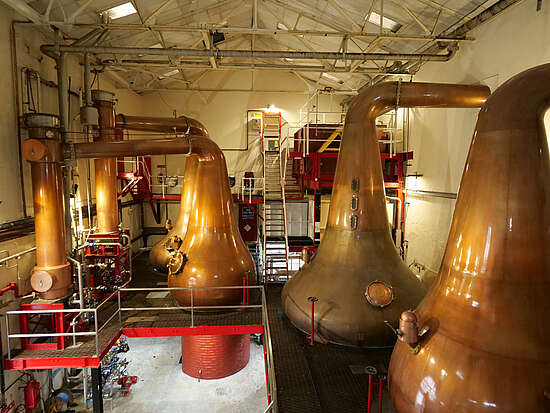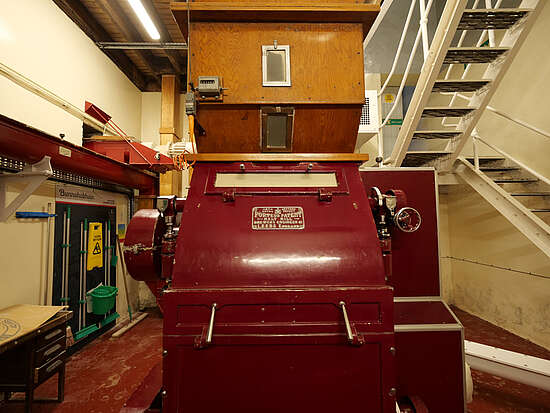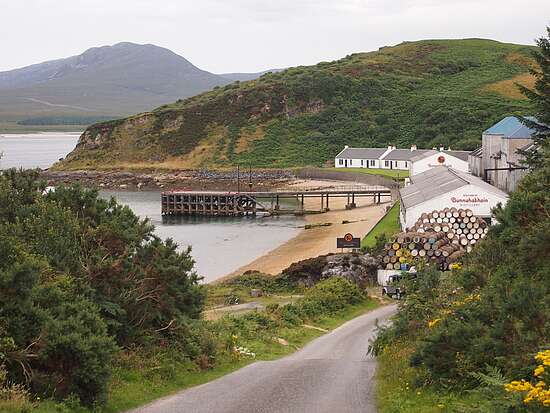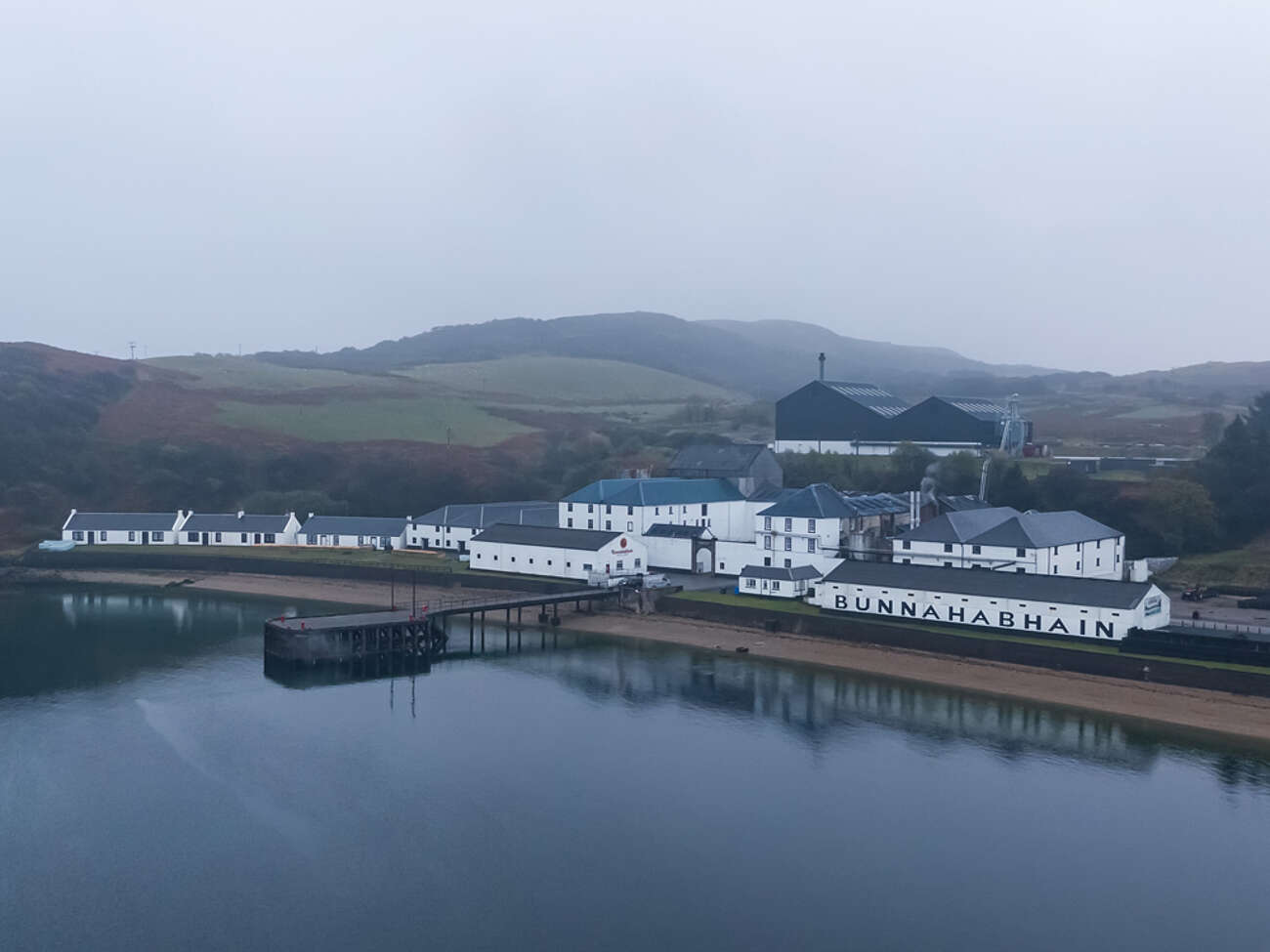
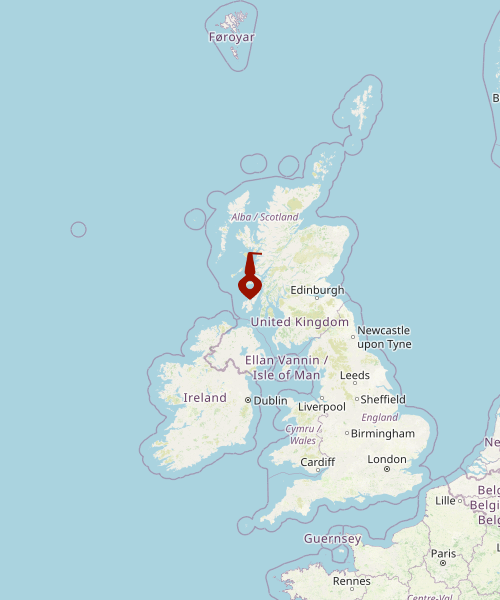
Bunnahabhain
Bunnahabhain means 'river mouth' translated from Gaelic. The distillery is the northernmost on the island of Islay and is located about three kilometres from Port Askaig. It was built by the Greenless Brothers in 1881.
Details about the Distillery
The Whisky
Bunnahabhain Whiskies are unpeated with a high Sherry influence. The distillery's standard range includes the 12-, 18-, 25-, 30- and 40-year-old Bunnahabhain, as well as the Stiuireadair and the Toiteach A Dhà. All except the 40-year-old are bottled at 46.3% vol.
There are also Limited Editions and Distillery Exclusive Whiskies, which are available exclusively at the distillery's visitor centre or via its website. In addition to the unpeated Whiskies, Bunnahabhain also releases smoky Whiskies, mostly recognisable by the name affix 'Móine', the Gaelic word for peat.
The Production
The production volume of Bunnahabhain is at about 3.5 million litres of alcohol per year. The water for the distillation comes from the Margadale River. It flows underground, so the water has to be pumped to the surface via pipes.
The labels of the Whisky bottles have always been adorned with the image of a sailer. This probably alludes to the fact that for a long time the distillery could only be reached by sea.
The Pot Stills
The distillery has four pot stills. The two wash stills have a capacity of 30,000 litres each but are only filled with 17,500 litres. The two spirit stills are half the size and are filled with about 10,000 litres each. The pot is pear-shaped and round. This results in a rather spicy and a bit rough Whisky.
The Malting
The malt comes from the Port Ellen Maltings, which are located on the southern half of the island of Islay. The distillery has large storage capacities for malt that even exceed those of Port Ellen Maltings. In the past, Bunnahabhain could only be supplied by ship, as a proper road to the distillery was not built until the 1960s. Therefore, a larger warehouse inevitably had to be built in order to have a stock available in case of shortages.
In the various malt bins, the distillery can store peated and unpeated malt separately. Currently, Bunnahabhain works with 40 per cent peated and 60 per cent unpeated malt. This is coarsely milled in batches in a Porteus Mill from 1964.
The Mashing
Bunnahabhain's mash tun is one of the largest in Scotland and dates back to the days when it supplied the blending industry. However, the capacity has since been reduced from 15 to 8.5 tonnes of barley meal, resulting in 35,000 litres of wort after a 12-hour mash cycle.
Half of the spent grains generated during production is used for a biomass reactor for energy recovery. The other half goes as usual to the surrounding farms as cattle feed.
The Fermentation
The distillery uses six washbacks made of Douglas fir with a capacity of 100,000 litres. These are each filled with 70,000 litres, which is the equivalent of two mash tuns. The fermentation time is about 55 hours. The result is a fruity, citrusy wash that is perfect for distillation.
The Warehouse
Bunnahabhain has the traditional flat bricked dunnages. They are all right next to or very close to the sea. This allows the Whisky to interact with the marine air on Islay. There are around 15,000 casks stored on the distillery's premises. Bunnahabhain Whisky is almost exclusively bottled in Sherry casks.
The History
Bunnahabhain was built in 1881 by the Greenless Brothers and is still the most northern distillery on the Isle of Islay. After the distillery was set up, a small town formed around the distillery.
In 1930, Bunnahabhain had to close for a short time. In 1963, production was increased from two to four stills. In 1999, the distillery passed into the ownership of the Edrington Trust.
In 2003 the distillery was bought by Burn Stewart Distillers and is active today.
The name of the distillery used to be spelt with four 'n's, i.e. Bunnahabhainn. However, the Royal Ordnance Survey, the authority responsible for land surveying in the United Kingdom, got it wrong and dropped the last 'n' in the name. After the authority refused to correct the name again, the local population adapted, and since then the spelling 'Bunnahabhain' has been commonly used.
The Visitor Centre
The distillery offers various tours and Whisky tastings that can be booked online. Construction of a new Visitor Centre began in 2019 and opened in 2021, offering beautiful views over the Sound of Islay.
